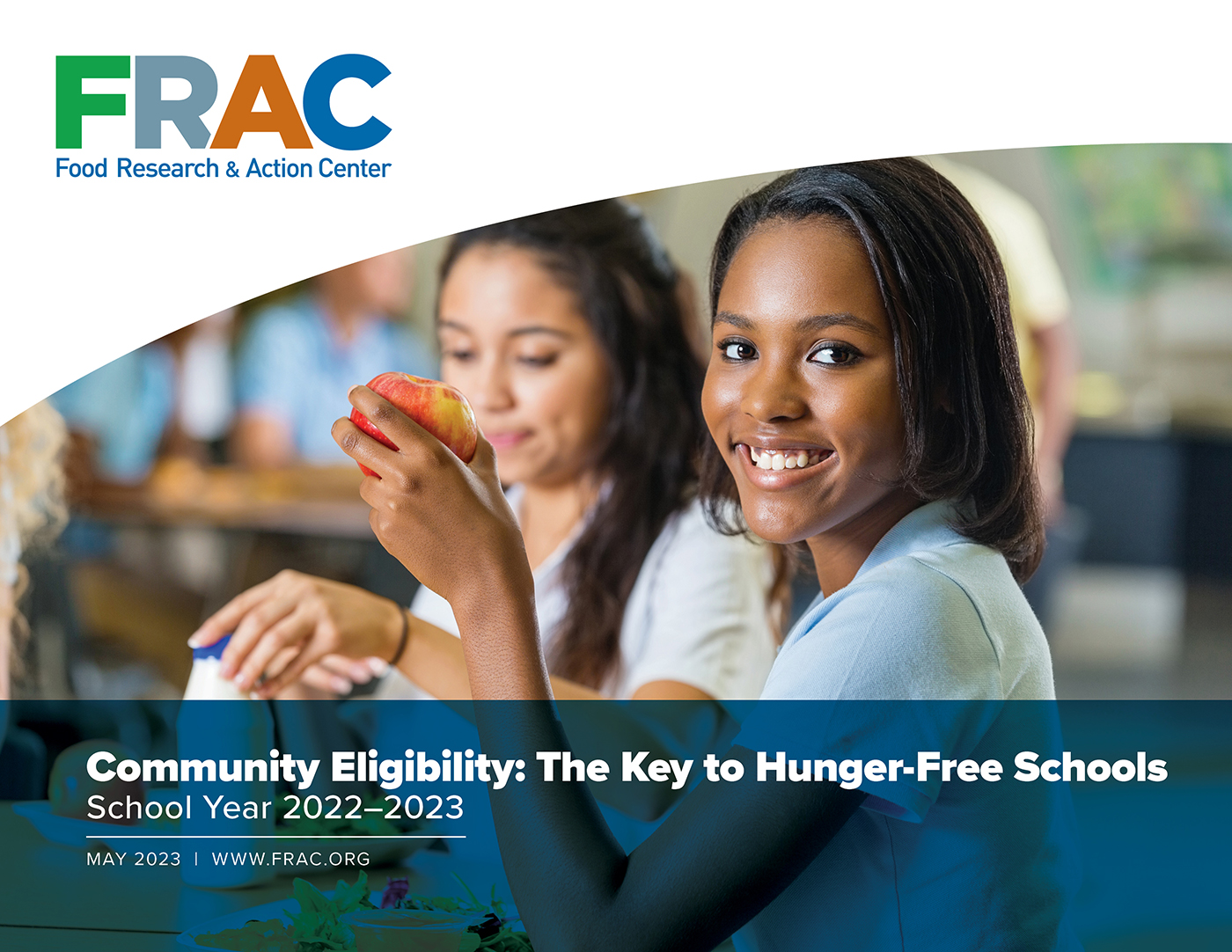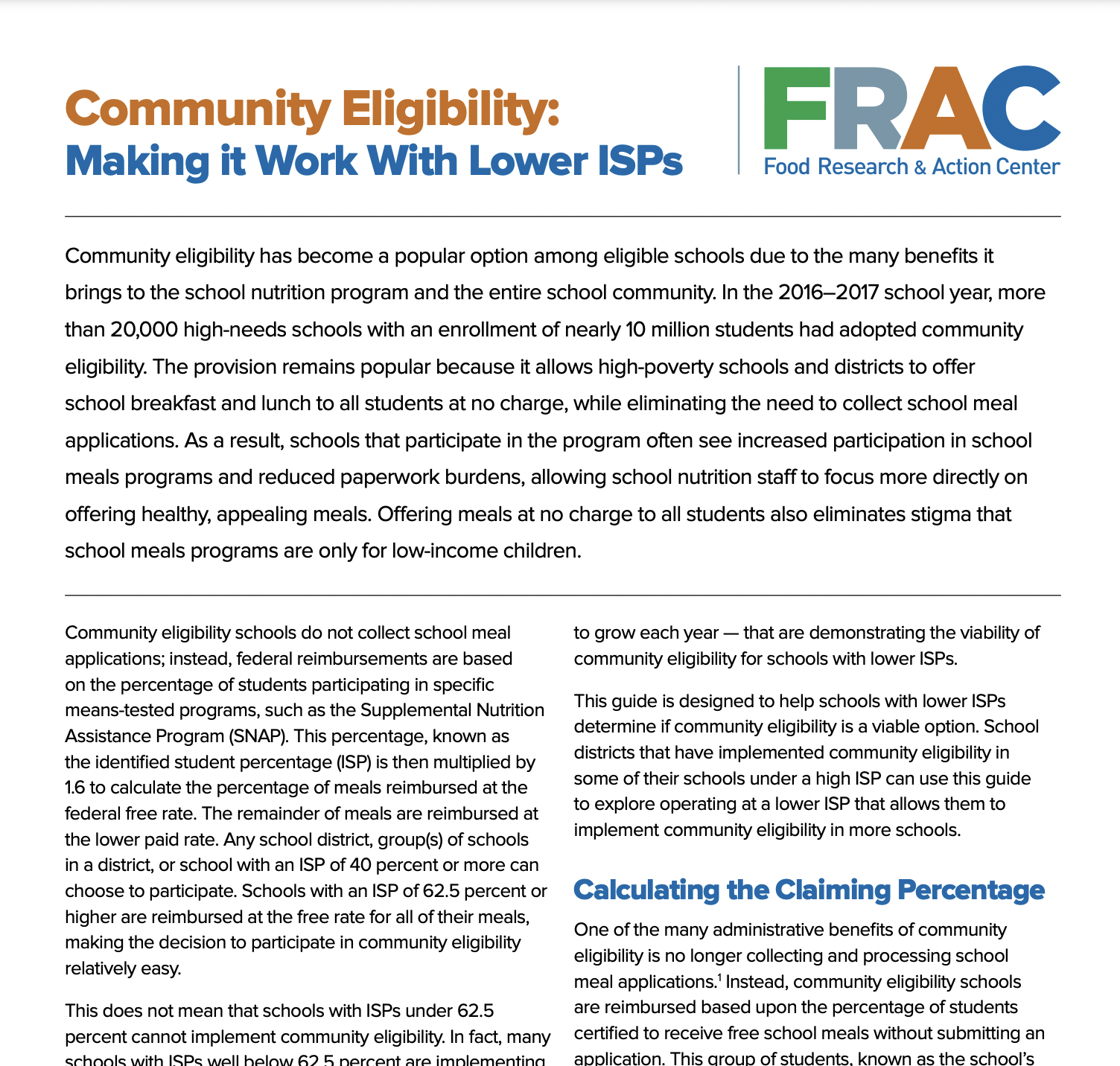During the 2022–2023 school year, there was a significant increase in the number of schools and districts participating in community eligibility, according to FRAC’s latest report, Community Eligibility: The Key to Hunger-Free Schools, School Year 2022–2023.
This report analyzes community eligibility adoption—nationally and for each state and the District of Columbia—in the 2022–2023 school year.
Key Findings
-
- 6,419 school districts have one or more schools adopting community eligibility, an increase of 876 school districts, or 15.8 percent, from the 2021–2022 school year.
- 40,235 schools have adopted community eligibility, an increase of 6,935 schools, or 20.8 percent, from the previous school year.
- 82 percent of eligible schools have adopted community eligibility.
- 19.9 million children attend a school that has adopted community eligibility, an increase of nearly 3.7 million children, or 22.5 percent, from the previous school year.


What Is The Community Eligibility Provision?
Community eligibility schools are high-need schools that offer breakfast and lunch to all students at no charge and use significant administrative savings to offset any additional costs, over and above federal reimbursements, of serving free meals to all.
- How are community eligibility schools reimbursed?Instead of collecting school meal applications, community eligibility schools are reimbursed at the free rate for a percentage of the meals served, using a formula based on the percentage of identified students [the students who are certified for free school meals without an application, for example, students whose households participate in specific means-tested programs, such as the Supplemental Nutrition Assistance Program (SNAP)].
- Which schools can participate?Any district, group of schools in a district, or a school with 40 percent or more “identified students” is eligible to participate. Identified students are comprised of students certified for free school meals without an application.
- Is school grouping possible?Yes. School districts may choose to participate school by school, districtwide, or group schools at their discretion if the school, school district, or group has an overall identified student percentage (ISP) of 40 percent or higher.
A Critical Pathway to Healthy School Meals for All
The 2022-2023 school year marked the end of the pandemic-related child nutrition waivers that have allowed schools across the country to offer meals to all their students at no charge since Spring 2020. Through the waivers, students, families, and schools were able to experience the benefits of Healthy School Meals for All.
In a 2022 FRAC survey, school districts reported numerous benefits including:
-
- reduced childhood hunger,
- elimination of stigma from participating in school meals,
- easing of administrative work,
- improvements in academic achievement, and
- elimination of school meal debt.
School nutrition professionals did not want to return to pre-pandemic operations, and according to FRAC polling, 63 percent of voters nationwide support legislation that would make healthy school meals for all students a permanent policy.
CEP has offered high-need school districts and schools an important opportunity to continue serving meals to all students at no charge, instead of transitioning back to normal school nutrition operations.
CEP Resources

Community Eligibility Provision Report 2023
Read the report
See if your school is eligible!
Community Eligibility Provision Database
CEP Report, 2021-2022
Read last year's report!
Making CEP Work with Low ISPs
Read the Fact Sheet
Communications Toolkit
Spread the word!
Fueling Children’s Health and Learning
Looking forward, Congress should pass legislation that allows all schools to offer free breakfast and lunch to all of their students. In lieu of that, an important incremental step is for Congress to bolster the financial viability of community eligibility by increasing the multiplier and creating a statewide community eligibility option that supports the growing number of states passing Healthy School Meals for All legislation.


